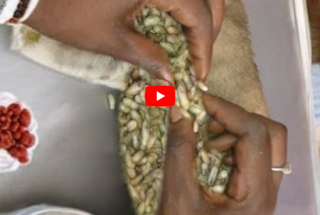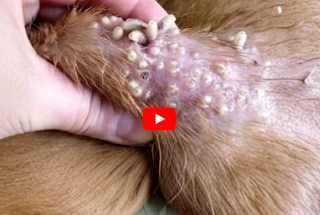🐾 How to Treat an Ingrown Toenail in Dogs
An ingrown toenail happens when a nail grows into the paw pad or surrounding skin. It’s painful and can cause bleeding, swelling, and infection. It’s most common in older dogs, dogs with long nails, or those who walk mostly on soft ground (so the nails don’t wear down naturally).
⚠️ Signs Your Dog Has an Ingrown Nail
- Limping or avoiding using one paw
- Licking or chewing at a specific toe
- Redness or swelling around the nail
- Bleeding or pus near the nail base
- Crying or pulling away when the paw is touched
If you see any of these signs, inspect the paw gently.
🩹 Step-by-Step Home Care (for Mild Cases)
If the ingrown nail hasn’t broken the skin deeply or isn’t infected, you can try the following steps to give relief before seeing a vet:
1. Calm and Restrain Your Dog
Have someone help hold your dog gently. Use a towel wrap for small dogs if needed to prevent sudden movement.
2. Soak the Paw
Fill a small tub or bowl with warm water and Epsom salt (about 1 tablespoon per cup of water).
Soak the paw for 5–10 minutes to soften the skin and nail, and to reduce swelling.
Do this once or twice a day.
3. Trim the Nail Carefully
If you can see that the nail tip is curving into the pad but hasn’t broken the skin deeply:
- Use dog nail clippers, not human ones.
- Clip just the curved part of the nail that’s pressing inward — avoid cutting too close to the pink “quick.”
- Do not try to dig the nail out if it’s embedded — that requires vet tools and anesthesia.
4. Clean the Area
After soaking and trimming, clean the paw with diluted antiseptic (like Betadine or chlorhexidine solution).
Dry the paw completely with a clean towel.
5. Apply a Pet-Safe Ointment
You can apply a thin layer of antibiotic ointment (like Neosporin) on the area to prevent infection.
Then, lightly bandage the paw if your dog keeps licking it — but make sure the wrap is not too tight.
🚫 When to See a Vet Immediately
Go to a veterinarian if:
- The nail has pierced the skin and there’s bleeding or pus
- Your dog is limping badly or crying in pain
- The toe is swollen, red, or hot to the touch
- You’re not sure how far to trim
In these cases, your vet may:
- Remove the embedded portion of the nail safely
- Prescribe antibiotics or pain relief
- Clean and bandage the wound under sterile conditions
Never attempt full nail removal at home — that’s a surgical procedure done under local anesthesia.
🐕 Prevention Tips
Keeping nails properly trimmed is the best way to prevent ingrown toenails:
- Trim nails every 2–4 weeks (or as soon as you hear them clicking on the floor)
- Make sure the hair between paw pads is trimmed so you can monitor nail growth
- Use grippy surfaces for walking to help naturally wear down nails
- Regularly check your dog’s paws — especially in senior dogs or those with curled nails
Takeaway
An ingrown nail in dogs can be painful but is very treatable if caught early. Soak, clean, and trim gently if it’s mild — but see a vet if there’s pain, swelling, or infection. Once treated, keeping up with regular nail trims will prevent it from coming back.



